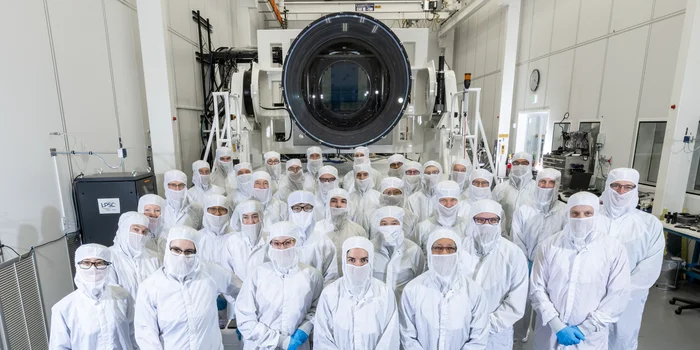
News + Trends
This camera has 3200 megapixels and costs 168 million
by David Lee


The camera monster offers a resolution of 3.2 gigapixels. It is intended to help research dark matter. But first it has to be transported to a remote observatory.
The LSST Camera is the largest camera in the world. Its sensor alone is 64 centimetres in size and delivers 3200 megapixels. The lens has a diameter of 157 centimetres. The one-off camera was built by the Stanford Linear Acceleration Centre (SLAC). Purpose: astronomical research. Cost: a lot.
The beginnings of the Giga project go back 20 years. In 2019, it was said that the camera was almost ready and would go into operation in 2021. Now, in 2024, it is finally complete and is expected to go into operation next year.
Until then, there is still some important work to be done: The camera, which weighs almost three tonnes, has to be transported a long way. Namely from California to a mountain peak in the Chilean Andes. There, at 2715 metres above sea level, is the Vera C. Rubin Observatory. At this extremely dry location, the visibility is practically unclouded, ideal for the purpose of the camera.
Once in operation, the camera is designed to take three photos per minute for ten years. The camera's field of view is around 40 times the size of the moon. The researchers want to use this for various purposes, but the most important is research into dark matter and dark energy. This was also the field of research of Vera C. Rubin, after whom the observatory is named. Today, it is assumed that only five per cent of the universe consists of ordinary matter. Dark matter is not directly visible, but research assumes that it must exist. This is because certain movements in space cannot be explained by the physical laws of matter alone. Detailed time-lapse recordings over a long period of time should help to better understand the phenomenon in future.
The SLAC has a more detailed explanation of the camera.


My interest in IT and writing landed me in tech journalism early on (2000). I want to know how we can use technology without being used. Outside of the office, I’m a keen musician who makes up for lacking talent with excessive enthusiasm.
From the latest iPhone to the return of 80s fashion. The editorial team will help you make sense of it all.
Show all